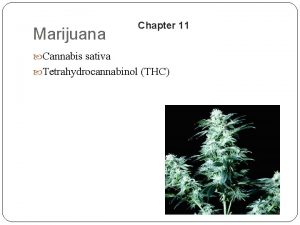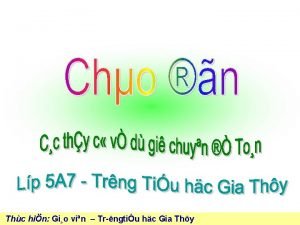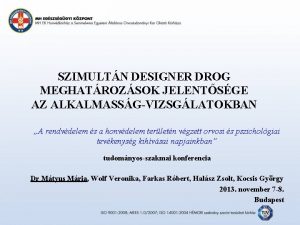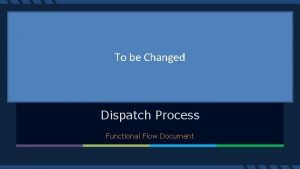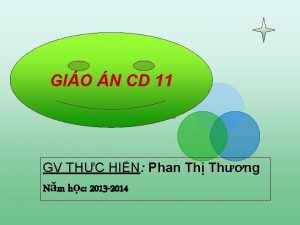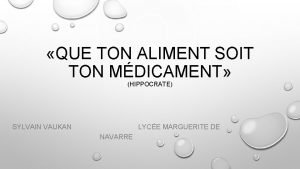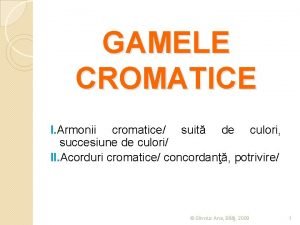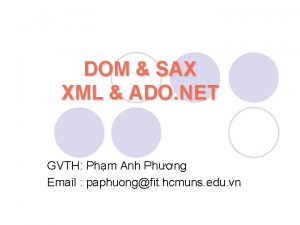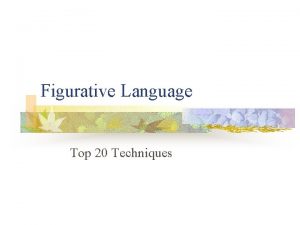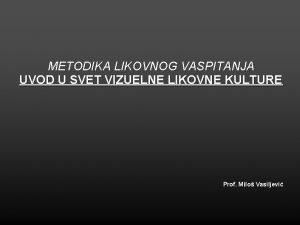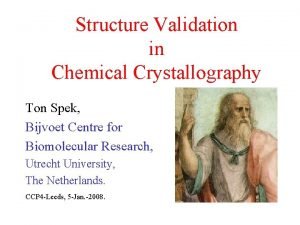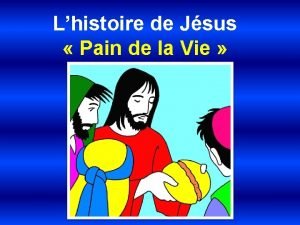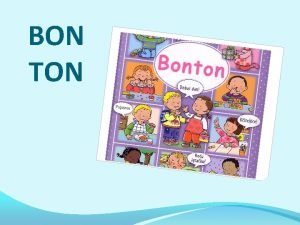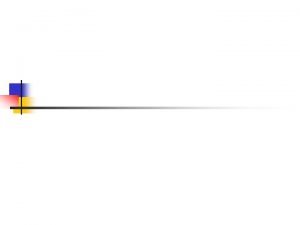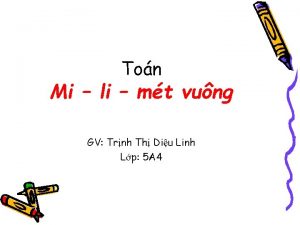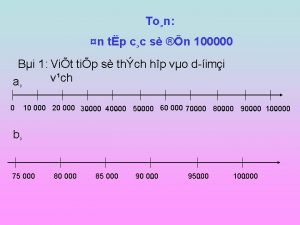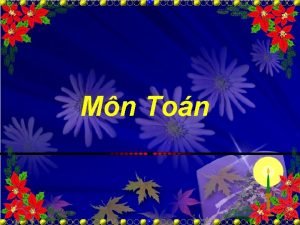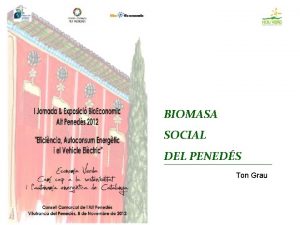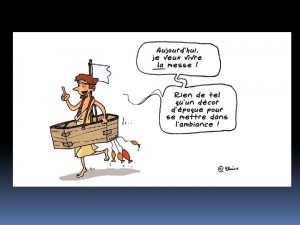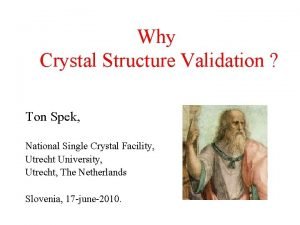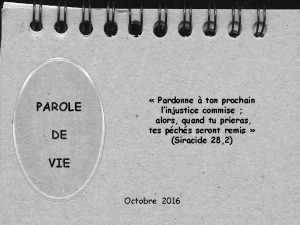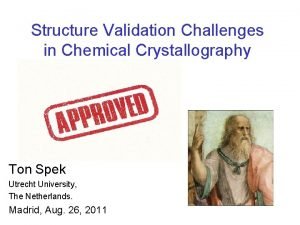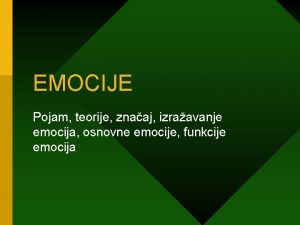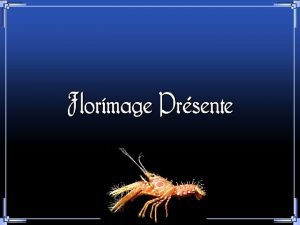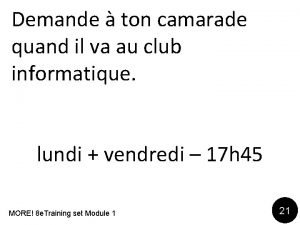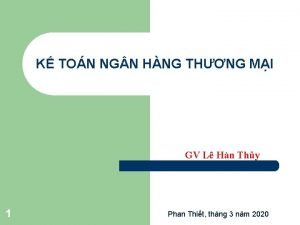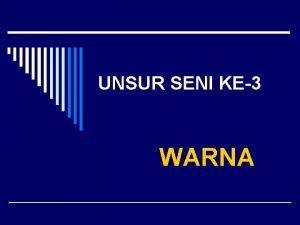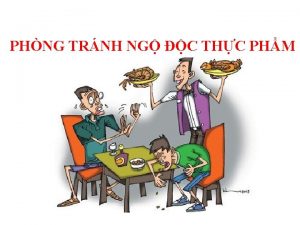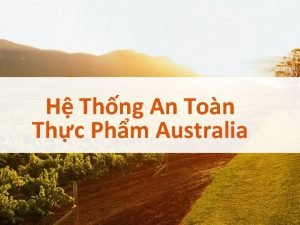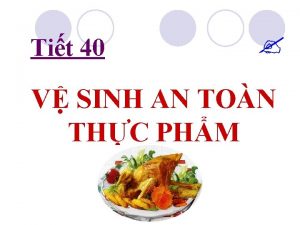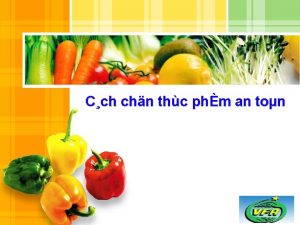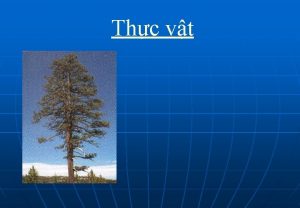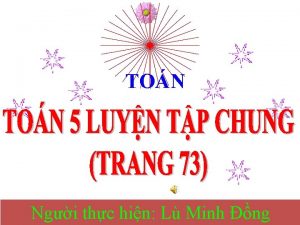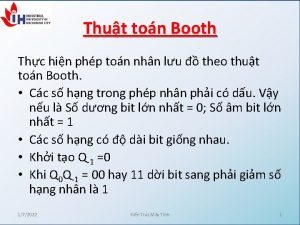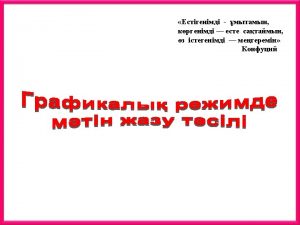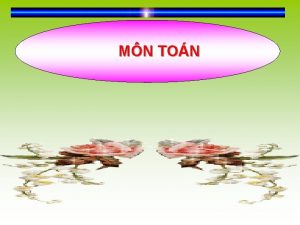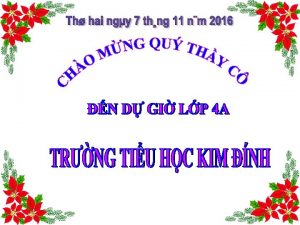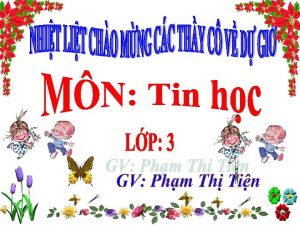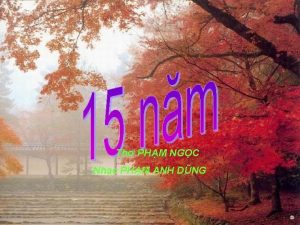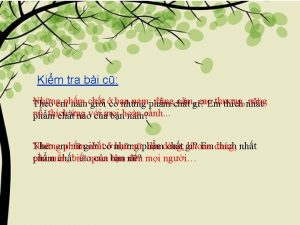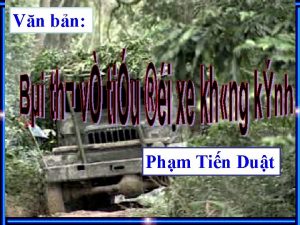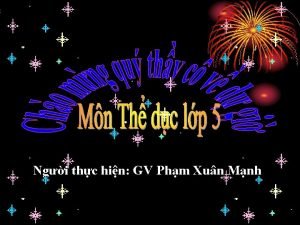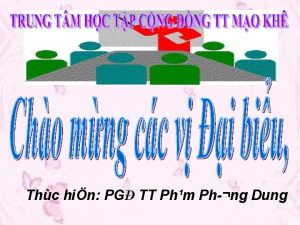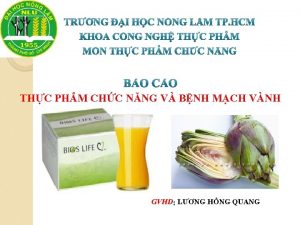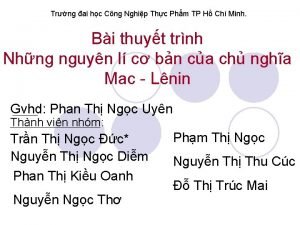NH GI AN TON THC PHM Gs Ts











































- Slides: 43

ĐÁNH GIÁ AN TOÀN THỰC PHẨM Gs Ts Bs Lê Hoàng Ninh


Nguyên tắc kiểm soát thực phẩm (FAO/WHO, 2002) 1. Quan niệm từ nông trại đến bàn ăn 2. Phân tích nguy cơ - Đánh giá nguy cơ - Truyền thông nguy cơ - Quản lý/ xử lý nguy cơ 3. Transparency 4. Đánh giá tác động của luật lệ the costs of compliance to the food industry, as these costs are ultimately passed onto consumers

Recognition of the significant impact of food borne contaminants (poisonings, diseases etc) in terms of human suffering and economic costs to society and industry, combined with an increasing global food trade has underlined the need for a structured risk assessment

HACCP chỉ là is một phần trong tiến trình phân tích nguy cơ HACCP là công cụ quản lý nguy cơ chứ không là công cụ đánh giá nguy cơ



HAZARD = a biological, chemical or physical agent with the potential to cause an adverse health effect ( e. g. Salmonella could be in food and it could make someone ill). . . CODEX definition RISK the likelihood of an adverse event (e. g. a consumer gets food-borne illness) and the severity of that event = RISK ≠ HAZARD

PH N TÍCH NGUY CƠ ĐÁNG GIÁ NGUY CƠ – a process to scientifically evaluate the probability of occurrence and severity of known or potential adverse health effect resulting from human exposure to foodborne hazards XỬ LÝ NGUY CƠ– a process to weigh policy alternative in light of the results of risk assessment and, if required, to select and implement appropriate control option TRUYỀN THÔNG NGUY CƠ – a process to exchange information and opinions interactively among risk assessors, risk managers and other interested parties



WHAT KNOWLEDGE? • • • . . Yes or No WHY? Yes or No HOW? Yes or No WHY? WHAT INFORMATION ?

Renwick et al. , 2003

A Four-Step Risk Assessment Framework 1. HAZARD IDENTIFICATION identification of biological/chemical agents that are capable of causing adverse health effects and may be present in a particular food or group of foods Information (biological, epidemiological etc) and expert knowledge on the link between a biological/chemical agent in a specific food and illness in consumers

2. HAZARD CHARACTERIZATION the qualitative and/or quantitative evaluation of the nature of the adverse effects associated with biological agents that may be present in food Dose response assessment – determination of the relationship between the numbers of the MO ingested (or the concentration of a microbial toxin) and the frequency and severity of defined adverse health effects resulting from ingestion

3. EXPOSURE ASSESSMENT the qualitative and/or quantitative evaluation of the likely intake of the biological agent via a food Estimation of the probability of consumption and the amount of biological agent likely to be consumed. All sources of entry of the hazard into the food should be evaluated.

4. RISK CHARACTERIZATION the qualitative and/or quantitative estimation of the probability of occurrence and severity of known or potential adverse health effects in a given population based on hazard indentification, hazard characterization/dose-response, and exposure assessment Combines all the information gathered to produce a statement of risk, also includes a summary of uncertainties and variability of the information used to derive the risk estimate



Decisions about hazards are essential to control, reduce, or eliminate requires definition of limits dictated by acceptable levels of risk. The notion of an “acceptable” or “tolerable” level of risk is a VALUE-LADEN concept that must be addressed by policy makers together with the public.


FOOD SAFETY EQUATION (H 0 - ∑R + ∑I) < PO (or FSO) H 0 ∑R = The Initial Contamination Level = The Sum of Reductions of Contaminant along the process (from farm to fork) ∑I = The Sum of Increases of Contaminant along the process (from farm to fork) PO = Performance Objective FSO = Food Safety Objective

ICMSF = International Commission on Microbiological Specification for Foods

FSO

DIETARY EXPOSURE ASSESSMENT of Toxic Chemicals

CONSUMPTION SAFETY based on EXPOSURE ASSESSMENT � Identification of NOAEL/NOEC based on results of toxicity tests (human or other mammals) ……………. …. Using Toxicological Database � Application of a safety factor – usually 100 (a “quick and dirty” method) Acceptable Daily Intake (ADI) or Reference Dose (Rf. D) NOAEL = no observed adverse effect level NEL = no effect level NOEC = no observed effect level

CONSUMPTION SAFETY based on EXPOSURE ASSESSMENT (Cont’d) 3. (Provisional) Tolerable Weekly Intake [ TWI = 7 x ADI ] 4. Estimation of daily or weekly intake (DI/WI) of toxicant …. based on daily or weekly consumption (DC/WC) of the foodstuff and its toxicant concentration Reference: and e. g. Trace Elements in Human Nutrition Health. WHO & FAO. 1996

CONSUMPTION SAFETY based on EXPOSURE ASSESSMENT (Cont’d) 5. Risk Characterization ………. Calculation of Hazard Quotient (HQ) HQ = WI/TWI or HQ = DI/ADI or HQ = DI/Rf. D If HQ > 1 …. there is a significant probability that the individual’s health will be affected by the toxic substance

CONSUMPTION SAFETY based on EXPOSURE ASSESSMENT (Cont’d) Definitions DC = daily consumption of the contaminated foodstuff (g) WC = weekly consumption of the contaminated foodstuff (g) DI = daily intake of the toxic substance (mg) WI = weekly intake of the toxic substance (mg) ADI = acceptable daily intake (mg/kg body weight) TWI = tolerable weekly intake (mg/(x)kg body weight) Ex. : WHO/FAO female 55 kg (15 60 yrs)

QUANTIFICATION OF RISK WI HQ = (1) MTWI WI = Weekly Intake of metal (μg/kg body weight) (weekly consumption of seafood x concentration of metal in seafood) MTWI = Maximum Tolerable Weekly Intake (μg/kg body weight) (WHO, 1996; Cu & Zn: Upper Limit of The Safe Range) n k HQ (T) = Σ Σ WIij/MTWIij (2) The Cumulative i=1 j=1 HQ value (Bu Olayan & Al Yakoob, 1998) i = 1 ………. n (index of metal) j = 1 ………. k (index of seafood)


Weekly Consumption of Seafood (3 coastal settlements)

Weekly Dietary Exposures and Hazard Quotients (1)

Weekly Dietary Exposures and Hazard Quotients (2)

Weekly Dietary Exposures and Hazard Quotients (3)

Tambak Lorok Tri Mulyo Tanah Mas

CURRENT WEEKLY CONSUMPTION LEVEL (WC) = 25. 9 g dw/person HQ = 1. 1 MAXIMUM WEEKLY TOLERABLE CONSUMPTION (MWTC) = [CONSUMPTION LEVEL THAT LEADS TO AN HQ VALUE OF 1. 0] MWTC = f (HQ, WC) MWTC = (1/HQ) X WC = (1/1. 1) 25. 9 g dw/person = 23. 5 g dw/person

� THE MELAMINE CASE

� In summary, excluding infant formula and assuming that 50% of the diet is contaminated at a level of 2. 5 ppm melamine and its analogs, there is a 1000 -fold difference between the estimated dietary exposure (intake) and the level of melamine that does not cause toxicity in animals (NOAEL). Thus, levels of melamine and its analogues below 2. 5 ppm in foods other than infant formula do not raise public health concerns.

Risk factors in the lifecycle of fermented sausages Sources: Hoornstra & Notermans (2001)

SPECIAL FEATURES OF MICROBIAL HAZARDS • Dynamic of growth • Inactivation of MOs throughout the food chain • Diversity of MOs and of human immune response to MOs • The phenomenon of resistance toward antibiotics, sanitizers, pasteurization • Role of the consumer in altering the potential risk outcome through food handling and preparation

Repeated Use Single Use Growth of bacteria in corned beef during storage in the refrigerator Sources: Mayasari (2004)

 Amotivational syndrome
Amotivational syndrome Vin thc
Vin thc Agilent
Agilent Dispatch process flow
Dispatch process flow Thc cd
Thc cd Jelaskan konsep angka indeks
Jelaskan konsep angka indeks Que ton aliment soit ton médicament
Que ton aliment soit ton médicament Game de culori
Game de culori Ton ton
Ton ton Phm hai
Phm hai Phm sax
Phm sax Sktpm adalah
Sktpm adalah Phm 142
Phm 142 My backpack weighs a ton figurative language
My backpack weighs a ton figurative language Ton cur
Ton cur Fond de decoloration
Fond de decoloration Lokalni ton
Lokalni ton Ton validation
Ton validation Oh mon sauveur a toi seul je veux etre
Oh mon sauveur a toi seul je veux etre Jsus
Jsus Bon ton ili bonton
Bon ton ili bonton T ton
T ton Ma mon mes ta ton tes sa son ses
Ma mon mes ta ton tes sa son ses Ton de communication exemple
Ton de communication exemple Bảng đơn vị đo diện tích
Bảng đơn vị đo diện tích Tocak emocija
Tocak emocija Ton n
Ton n C bn
C bn Ton grau
Ton grau Je veux chanter ton amour seigneur
Je veux chanter ton amour seigneur Ton validation
Ton validation Pardonne à ton prochain
Pardonne à ton prochain Ton spek
Ton spek Teorije emocija
Teorije emocija Je partage ton point de vue
Je partage ton point de vue Ton camarade
Ton camarade Oh que ton joug est facile
Oh que ton joug est facile K-ton
K-ton Ton ng
Ton ng Tu m'as dit zachee descends de ton arbre
Tu m'as dit zachee descends de ton arbre Ouvre mes yeux, seigneur, fais que je voie pdf
Ouvre mes yeux, seigneur, fais que je voie pdf Warna+primer
Warna+primer Dieu saint dieu fort dieu immortel béni soit ton nom
Dieu saint dieu fort dieu immortel béni soit ton nom Warna pengenap
Warna pengenap
